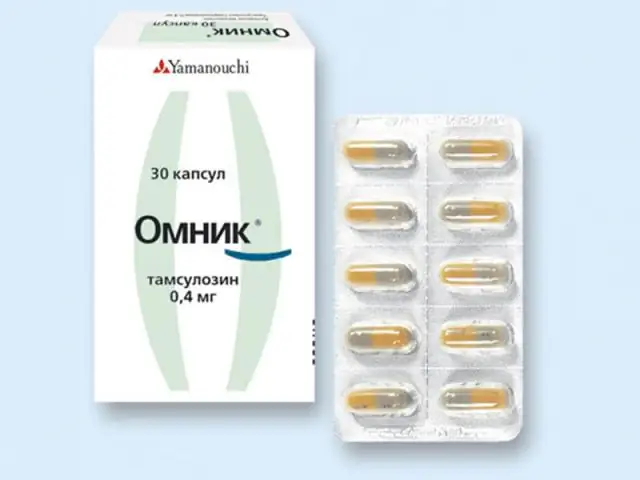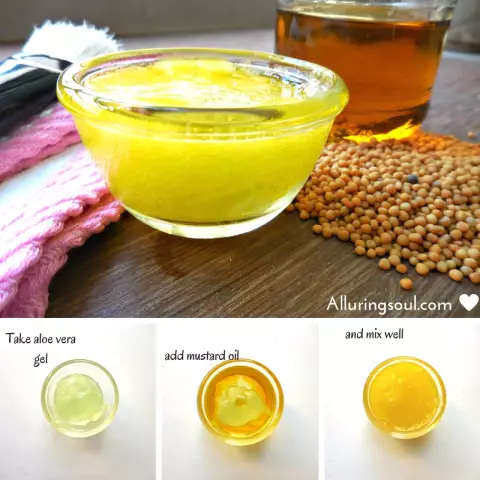- Author Rachel Wainwright [email protected].
- Public 2023-12-15 07:39.
- Last modified 2025-11-02 20:14.
Rastan
Rastan: instructions for use and reviews
- 1. Release form and composition
- 2. Pharmacological properties
- 3. Indications for use
- 4. Contraindications
- 5. Method of application and dosage
- 6. Side effects
- 7. Overdose
- 8. Special instructions
- 9. Application during pregnancy and lactation
- 10. Use in childhood
- 11. Use in the elderly
- 12. Drug interactions
- 13. Analogs
- 14. Terms and conditions of storage
- 15. Terms of dispensing from pharmacies
- 16. Reviews
- 17. Price in pharmacies
Latin name: Rastan
ATX code: H01AC01
Active ingredient: somatropin (somatropin)
Manufacturer: Pharmstandard-UfaVITA (Russia)
Description and photo update: 2019-26-08
Prices in pharmacies: from 10782 rubles.
Buy

Rastan is a recombinant somatotropic hormone preparation that has a pronounced effect on metabolic processes, stimulating skeletal and somatic growth.
Release form and composition
- Lyophilisate for the preparation of a solution for subcutaneous administration: white or white-yellowish color (in glass vials, in a cardboard box 1 vial with lyophilisate and 1 vial with solvent (1 ml or 2 ml); in glass vials, 1 vial with lyophilizate and 1 vial with a solvent (1 ml or 2 ml) in a blister strip, in a cardboard box (1 package);
- Solution for subcutaneous administration: colorless or slightly colored, opalescent or transparent (3 ml each in colorless glass cartridges or colorless glass vials, 1 or 5 cartridges / vials in a blister strip, in a cardboard box 1 package).
Each pack also contains instructions for using Rastan.
The active substance is human somatropin:
- 1 bottle of lyophilisate - 4 IU (1.33 mg), 16 IU (5.33 mg) or 20 IU (6.67 mg);
- 1 ml of solution - 15 IU (5 mg).
Auxiliary components of the lyophilisate: sodium dihydrogen phosphate dihydrate, sodium hydroxide, mannitol, glycine.
The composition of the solvent (transparent, colorless or slightly colored): metacresol - 3 mg, water for injection - 1 mg.
Excipients of the solution: sodium citrate dihydrate, citric acid, polysorbate 20, sodium chloride, water for injection, phenol.
Pharmacological properties
Pharmacodynamics
The active ingredient of Rastan is somatropin, which is a somatotropic hormone that stimulates somatic and skeletal growth, has a pronounced effect on metabolic processes. The drug acts on bone metabolism and on the epiphysis plates of tubular bones in children, thereby stimulating the growth of skeletal bones. Increases muscle mass and reduces fatty tissue, thereby normalizing body structure.
Somatropin replacement therapy in patients with growth hormone deficiency and osteoporosis leads to the normalization of the mineral composition and bone density.
Somatropin increases the number and size of muscle cells, sweat glands, thymus, thyroid, liver, adrenal glands. By acting on the lipid and lipoprotein profile, Rastan lowers cholesterol levels. Stimulates protein synthesis and transport of amino acids into the cell. Promotes the retention of phosphorus, sodium and potassium. Suppresses insulin release. Increases body weight, physical endurance and muscle performance.
Pharmacokinetics
After subcutaneous (SC) administration, somatropin is absorbed by 80%. The maximum plasma concentration reaches within 3-6 hours.
Penetrates into well-perfused organs, especially kidneys and liver. The volume of distribution is 0.49-2.11 l / kg.
The half-life is from 3 to 5 hours.
Indications for use
- In children: growth retardation due to insufficient secretion of growth hormone, Shereshevsky-Turner syndrome, chronic renal failure (decreased renal function by more than 50%) in the prepubertal period, accompanied by growth retardation;
- In adults: confirmed congenital or acquired pronounced growth hormone deficiency (replacement therapy).
Contraindications
Absolute:
- Closed epiphyseal growth zones (if necessary to stimulate growth);
- Urgent conditions (including acute respiratory failure, conditions after operations on the heart and abdominal cavity);
- Malignant neoplasms;
- Pregnancy and lactation period;
- Individual hypersensitivity to Rastan components.
Carefully:
- Intracranial hypertension;
- Diabetes;
- Hypothyroidism, including during the period of thyroid hormone replacement therapy;
- Prader-Willi syndrome;
- Concomitant use of glucocorticosteroids.
Rastan, instructions for use: method and dosage
Rastan is injected slowly subcutaneously once a day, usually at night, alternating injection sites (to avoid the development of lipoatrophy).
The doctor selects the dose individually, depending on the severity of the growth hormone deficiency, the patient's weight or his body surface area, as well as the effectiveness of the drug during therapy.
Recommended dosages:
- Insufficient growth hormone secretion in children: 0.07-0.1 IU / kg (0,025-0,035 mg / kg) per day, which corresponds to 3.2 IU / m 2 (0.7-1 mg / m 2) per day … Treatment should be started as early as possible and continued until the closure of bone growth and / or puberty. Also, the termination of therapy is possible after achieving the desired result;
- Turner's syndrome, chronic renal failure accompanied by growth retardation: 0.14 IU / kg (0.05 mg / kg) per day, which corresponds to 4.3 IU / m 2 (1.4 mg / m 2) per day … In case of insufficient growth dynamics, dose adjustment is required;
- Growth hormone deficiency in adults: at the beginning of treatment - 0.45-0.9 IU (0.15-0.3 mg) per day, then, depending on the effect, the dose is increased. During the dose titration period, serum insulin-like growth factor (IGF-1) data can be used as a control parameter. The maintenance dose is selected individually, but it usually does not exceed 3 IU (1 mg) per day.
Elderly patients are advised to prescribe Rastan in lower doses.
Rules for the preparation of a solution for injection from a lyophilisate: take the supplied solvent into the syringe and insert it through the stopper into the vial with the lyophilisate, gently shake the vial until the contents are completely dissolved (without shaking!).
Injection technique when using Rastan solution in vials:
- Disinfect the rubber membrane of the vial with an antiseptic (for example, alcohol) to prevent the ingress of microorganisms. This is especially important when carrying out multiple injections;
- Prepare sterile needles and syringes of sufficient volume;
- Draw air into the syringe in a volume that corresponds to the required dose of the drug and enter it into the bottle;
- Without removing the syringe, turn the bottle upside down and draw the required dose of the drug into the syringe;
- Remove the needle from the bottle;
- Remove air from the syringe;
- Check the correctness of the dose set;
- Inject.
Injection technique when using the solution in cartridges using a syringe pen designed for the corresponding cartridges (for example, BiomaticPen):
- Make sure there are no damage to the cartridge (for example, cracks) and changes in the appearance of the solution (presence of sediment, changes in transparency and color, etc.);
- Treat the rubber cap of the cartridge with an antiseptic;
- Install the cartridge in the pen in accordance with the instructions for its use;
- Inject. The needle should remain under the skin for at least 10 seconds. The button should be held down until the needle is completely removed from under the skin to ensure the correct dose is administered and to limit the risk of lymph or blood entering the needle and drug cartridge.
Each cartridge should only be used by 1 person. It cannot be refilled. A new replaceable sterile needle must be used for each injection.
To administer the Rastan dose prescribed by the doctor, you need to use the table for recalculating the readings of the syringe pen indicator into the drug dose. The step of measuring the dose of the BiomaticPen syringe pen is indicated by the letter "K." (click) and is 0.05 mg. Thus, when using Rastan solution for subcutaneous administration in 3 ml cartridges, number 1 will correspond to a dose of 0.05 mg, number 2 - 0.1 mg, number 3 - 0.15 mg, etc., number 60 - 3 mg …
Side effects
- From the endocrine system: hyperglycemia, decreased thyroid function;
- From the side of metabolism: fluid retention and the development of peripheral edema;
- From the hematopoietic system: leukemoid reactions;
- From the side of the central nervous system: increased intracranial pressure (manifested by visual impairment, nausea, headache, vomiting);
- From the musculoskeletal system: epiphyseolysis of the femoral head;
- Allergic reactions: itching, skin rash;
- Local reactions: swelling, soreness, hyperemia, numbness and lipoatrophy at the injection site;
- Side effects described in the literature: edema of the optic nerve head (often occurs during the first 8 weeks of treatment, usually in patients with Shereshevsky-Turner syndrome), hearing impairment and otitis media (in patients with Shereshevsky-Turner syndrome), fatigue, weakness, gynecomastia, progression of scoliosis (in patients with excessively rapid growth), hip subluxation in children (pain in the knee and hip, limping), pancreatitis (nausea, vomiting, abdominal pain), accelerated growth of a pre-existing nevus (possible malignancy), increased activity of alkaline phosphatase, blood levels of parathyroid hormone and inorganic phosphate.
Overdose
In case of acute overdose, hypoglycemia may develop, then hyperglycemia. With prolonged use of Rastan in high doses, signs characteristic of an excess of human growth hormone in the body may appear, such as acromegaly and / or gigantism, a decrease in the level of cortisol in the blood serum, hypothyroidism.
Growth hormone Rastan in these cases is canceled and symptomatic therapy is carried out.
special instructions
Due to the likelihood of developing lipoatrophies, the sites of subcutaneous injections should be changed.
In the absence of symptoms of increased intracranial pressure, Rastan does not adversely affect the speed of reactions and the ability to concentrate.
In the event of lameness during the period of somatropin therapy, careful monitoring of the patient's condition is necessary.
Patients with diabetes mellitus during treatment with Rastan may require a dose adjustment of the hypoglycemic drug. The likelihood of latent hypothyroidism manifestation should be taken into account. Patients who receive levothyroxine sodium are at risk of developing symptoms of hyperthyroidism.
During the period of treatment, the state of the fundus should be monitored, especially with the development of symptoms of intracranial hypertension. In case of optic nerve edema, the drug must be canceled.
Rastan treatment should be discontinued during kidney transplantation.
Influence on the ability to drive vehicles and complex mechanisms
In the absence of signs of increased intracranial pressure (visual impairment, headache, nausea, vomiting), Rastan does not affect the speed of reactions and the ability to concentrate.
Application during pregnancy and lactation
Rastan is contraindicated during pregnancy and lactation.
Pediatric use
Growth hormone Rastan is used in pediatrics in accordance with the age-related dosage regimen.
Use in the elderly
In elderly patients, Rastan should be used with caution, at lower doses.
Drug interactions
Glucocorticosteroids suppress the stimulating effect of somatropin on growth processes.
Concomitant therapy with other hormones, such as estrogens, anabolic steroids, gonadotropin, or thyroid hormones, may also affect Rastan's efficacy for final growth.
Somatropin increases the clearance of drugs that are metabolized by microsomal liver enzymes, especially cyclosporine, glucocorticoids, sex hormones and anticonvulsants.
Analogs
Rastan's analogs are: Genotropin, Humatrop, Jintropin, Saizen, Biosome, Dinatrop, Norditropin, Omnitrop.
Terms and conditions of storage
Keep out of the reach of children at a temperature of 2-8 ºС. Do not freeze.
Shelf life is 2 years.
The solution prepared from the lyophilisate can be stored for 14 days at a temperature of 2-8 ºС.
The opened cartridge or bottle of solution can be stored for 28 days at a temperature of 2-8 ° C.
Terms of dispensing from pharmacies
Dispensed by prescription.
Reviews about Rastan
On specialized medical sites and forums, there are both positive reviews about Rastan and negative ones. In the first, patients describe the effectiveness of the drug for growth hormone deficiency. Such beneficial effects as strengthening the musculoskeletal system, increasing muscle mass, reducing body fat, improving skin elasticity, and increasing potency in adult men are also noted. Negative reviews contain complaints about the lack of effect or its absence.
In addition to individual reactions of intolerance, other side effects of Rastan are not described in the messages, which allows us to judge the relative safety of the drug.
Rastan price in pharmacies
Approximate prices for Rastan: solution for subcutaneous administration of 15 IU / ml - 10 956-11 319 rubles. for 1 cartridge of 3 ml; lyophilisate for preparing a solution for subcutaneous administration of 4 IU - 1290-1433 rubles. for 1 bottle 1.33 mg.
Rastan: prices in online pharmacies
|
Drug name Price Pharmacy |
|
Rastan 15 IU / ml solution for subcutaneous administration 3 ml 1 pc. RUB 10,782 Buy |

Maria Kulkes Medical journalist About the author
Education: First Moscow State Medical University named after I. M. Sechenov, specialty "General Medicine".
Information about the drug is generalized, provided for informational purposes only and does not replace the official instructions. Self-medication is hazardous to health!






